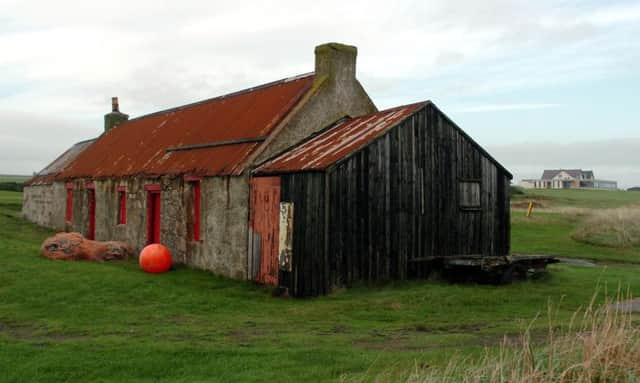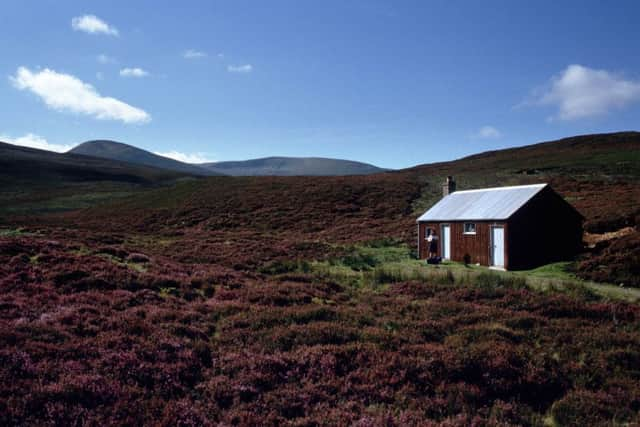Book published to mark 50 years of mountain bothies


But it was only 50 years ago when the notion of bothies came about.
Now, half a century later, the Mountain Bothies Association has published a history of its work to celebrate its golden anniversary.
Advertisement
Hide AdAdvertisement
Hide AdThe organisation boasts some 3,700 members, currently maintaining 99 shelters in the remotest parts of the UK.


Neil Stewart, trustee and publicity co-ordinator, said: “It is now 50 years since the association was formed and the first building- at Tunskeen in Dumfries and Galloway - was restored.
“In the succeeding years, many, many volunteers have worked to restore and to maintain as open shelters buildings in the remoter parts of the country that might otherwise have been lost for ever.
“Bothies have a long tradition among the outdoor community and indeed can be a lifesaver if the weather deteriorates unexpectedly.
“Enthusiasm within the Association remains as high as ever and we are looking forward to many more years caring for these unique buildings.”
Of its 99 bothies 81, are in Scotland, 10 in England and eight in Wales. The MBA has also reached agreements to maintain two more, one in England and the other in Wales.
Mr Stewart said: “These shelters are unlocked and are available for anyone to use free of charge. All maintenance activities are carried out by volunteers and new members who want to support the Association in this work are welcomed.
“It is difficult to assess which bothies are the most popular as anyone can turn up to stay, and there are no records kept.
Advertisement
Hide AdAdvertisement
Hide Ad“But Corrour in the Cairngorms and Shenavall in Wester Ross must be very near the top of any list of most visited.”
Most are located in remote locations, but the most remote in the country are considered to be Usinish in South Uist or Guirdil in Rum, if you stay on the mainland. Of the mainland bothies, Strathchailleach near Cape Wrath is a long walk over pathless country.
Founded on 28 December 1965, the Mountain Bothies Association (MBA) exists to maintain remote buildings for which the owner has little or no use, yet remain important to walkers and others who make use of the shelter that they provide.
Only one of the bothies - Over Phawhope in the Scottish Borders - is actually owned by the MBA. The other buildings are maintained with the agreement and encouragement of the owners.
Mr Stewart said: “The Association does not receive any public subsidy. All maintenance work is financed from the MBA’s own resources, mainly membership subscriptions supplemented by generous donations from benefactors, usually individuals or groups who wish to thus commemorate a relative or friend who was a hill-walker or climber.
“In 2014, the Association spent £44,000 on maintenance activities. Our volunteers contributed 1,152 working days and undertook maintenance at 59 bothies.”
Bothies are typically small cottages previously used by estate workers.
They have minimal furnishings, sometimes a fireplace or stove and a sleeping platform. Otherwise, nothing is provided for users.
Advertisement
Hide AdAdvertisement
Hide AdThey must carry in their own fuel, sleeping bags, food etc. and make their own provision for drinking water.
Users should take their rubbish away with them – as, obviously, there is no rubbish collection at bothies.
Some bothies have toilets, but most don’t. There is usually a spade provided so that people can bury human waste.
Bothies are refuges for people out in remote places and suit the needs of those who travel in ones and twos.
They are not suitable for groups, whose use is discouraged. Users are asked to comply with a Bothy Code, based on respect for the bothy, its surroundings, and other users, and are asked to observe any restrictions on its use requested by its owners.
The MBA takes buildings that are sometimes ruins, turns them into wind and waterproof shelters and subsequently maintains them for use by those who use the wild and lonely areas of the country.
Mr Stewart added: “Without the co-operation and support of the owners of the buildings, there would be no MBA, and probably very few bothies.
“There has hardly been a renovation project that has not benefited from the practical support of an owner and their staff, for example, in providing transport for materials and sometimes even paying for those materials for work parties.
Advertisement
Hide AdAdvertisement
Hide Ad“Usage of bothies is increasing as more and more people head for the outdoors as an antidote to a hectic working life.
“As the Association passes its half century, its work is as relevant and important as it was when it started. That work was recognised in 2015 with the award of the Queens Award for Voluntary Service, the MBE for volunteer groups.”
The Association has published a 50th anniversary book, Mountain Bothies, Celebrating 50 Years of the MBA, and copies can be obtained through their website.